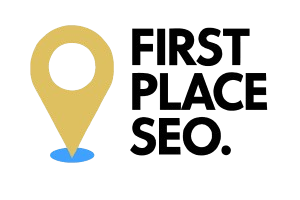What is the Difference Between SEO and SEM?
Have you ever wondered why some websites appear at the top of search results while others don’t? The answer often lies in their use of SEO and SEM. Both are crucial for improving website visibility, but what exactly sets them apart? Let’s dive in and explore the differences between SEO and SEM, and how they can work together to boost your online presence.
Introduction to SEO and SEM
SEO (Search Engine Optimization) and SEM (Search Engine Marketing) are fundamental strategies for digital marketing. While they share the common goal of increasing a website’s visibility in search engine results pages (SERPs), their approaches and methods differ significantly.
Key Concepts of SEO
SEO focuses on improving organic search results. It involves optimizing website content, enhancing site structure, and building high-quality backlinks. The goal is to make your website more attractive to search engines, which in turn improves its ranking.
Key Concepts of SEM
SEM encompasses SEO but also includes paid advertising strategies like Pay-Per-Click (PPC) campaigns. These paid strategies allow businesses to bid on keywords and display ads at the top of search results, gaining immediate visibility.
Organic vs. Paid Search
One of the primary differences between SEO and SEM is organic versus paid search results. SEO aims for high organic rankings through content optimization and link building. In contrast, SEM achieves visibility through paid ads, which appear prominently in search results for as long as the campaign is active.
SEO Strategies
Effective SEO strategies include keyword research, on-page optimization (such as meta tags and content quality), technical SEO (site speed and mobile-friendliness), and off-page SEO (backlinks from reputable sites).
SEM Strategies
SEM strategies involve creating and managing PPC campaigns, which include keyword selection, ad creation, and budget management. Successful SEM requires continuous monitoring and adjustment to optimize ad performance and return on investment (ROI).
SEO Tools
Several tools assist with SEO efforts. These include Google Analytics for tracking traffic, SEMrush for keyword research, and Ahrefs for backlink analysis. These tools help identify opportunities for improvement and measure the success of SEO strategies.
SEM Tools
Tools for SEM include Google Ads for managing PPC campaigns, Bing Ads for alternative search engine marketing, and SpyFu for competitor analysis. These tools help optimize ad spend and track campaign effectiveness.
SEO Metrics
Key metrics for measuring SEO success include organic traffic, bounce rate, keyword rankings, and conversion rates. These metrics provide insight into how well your SEO strategies are performing and where adjustments are needed.
SEM Metrics
SEM success is measured through metrics such as click-through rates (CTR), cost per click (CPC), conversion rate, and overall return on ad spend (ROAS). These metrics help assess the efficiency and profitability of your SEM campaigns.
Benefits of SEO
SEO offers long-term benefits. Once your website ranks high organically, it can maintain its position with minimal ongoing costs. SEO builds credibility and trust with users, as organic search results are perceived as more trustworthy than paid ads.
Benefits of SEM
SEM provides quick results. Paid ads can drive immediate traffic to your website, which is especially beneficial for time-sensitive campaigns or new businesses looking to establish an online presence quickly.
SEO Challenges
SEO is a long-term strategy that requires time and patience. Achieving high organic rankings can take months, and staying updated with constantly changing search engine algorithms is challenging.
SEM Challenges
The primary challenge of SEM is cost. PPC campaigns can become expensive, especially in competitive industries. Additionally, the results last only as long as the campaign is active, requiring continuous investment.
Cost Comparison: SEO vs. SEM
SEO generally involves time and effort rather than direct costs. Businesses may invest in tools or hire experts, but there are no costs for organic clicks. SEM, on the other hand, involves direct costs for each click or impression, leading to higher short-term expenses.
SEO and SEM for Small Businesses
Small businesses can leverage SEO for cost-effective long-term growth. Investing in quality content and local SEO can yield significant returns. SEM can provide immediate visibility and traffic, making it ideal for launching new products or services.
SEO and SEM for E-commerce
E-commerce sites benefit from both SEO and SEM. SEO drives organic traffic to product pages, while SEM can target specific products with ads, leading to higher conversions. Combining both strategies ensures a steady stream of visitors and sales.
Integrating SEO and SEM
Integrating SEO and SEM provides a balanced approach. SEO builds a strong foundation for long-term visibility, while SEM offers immediate results and insights that can inform your SEO strategy. Together, they enhance overall search engine presence.
Case Studies: SEO vs. SEM
Several case studies highlight the benefits of using SEO and SEM together. For example, a small business might use SEM to drive immediate traffic while building an SEO strategy for long-term growth. These case studies show how a combined approach can maximize ROI.
Future Trends in SEO and SEM
The future of SEO and SEM includes advancements in artificial intelligence and machine learning. Voice search and mobile optimization are becoming increasingly important. Staying ahead of these trends ensures your strategies remain effective.
FAQs
What is SEO? SEO, or Search Engine Optimization, involves optimizing your website to achieve higher rankings in organic search results.
What is SEM? SEM, or Search Engine Marketing, includes both SEO and paid advertising strategies to increase visibility in search results.
How do SEO and SEM differ in cost? SEO primarily involves time and effort, while SEM requires direct costs for paid ads. SEM provides immediate results, whereas SEO offers long-term benefits.
Can small businesses benefit from SEM? Yes, SEM can drive immediate traffic and visibility, which is beneficial for small businesses looking to establish their online presence quickly.
What tools are used for SEO? Common SEO tools include Google Analytics, SEMrush, and Ahrefs, which help track performance and identify opportunities for improvement.
Is it effective to use both SEO and SEM? Yes, integrating both strategies provides a comprehensive approach, combining long-term growth from SEO with immediate results from SEM.
Conclusion: Understanding the differences between SEO and SEM allows you to leverage their strengths effectively. SEO offers sustainable growth through organic search, while SEM provides quick visibility with paid ads. By integrating both, you can maximize your website’s potential and achieve a balanced approach to digital marketing.

